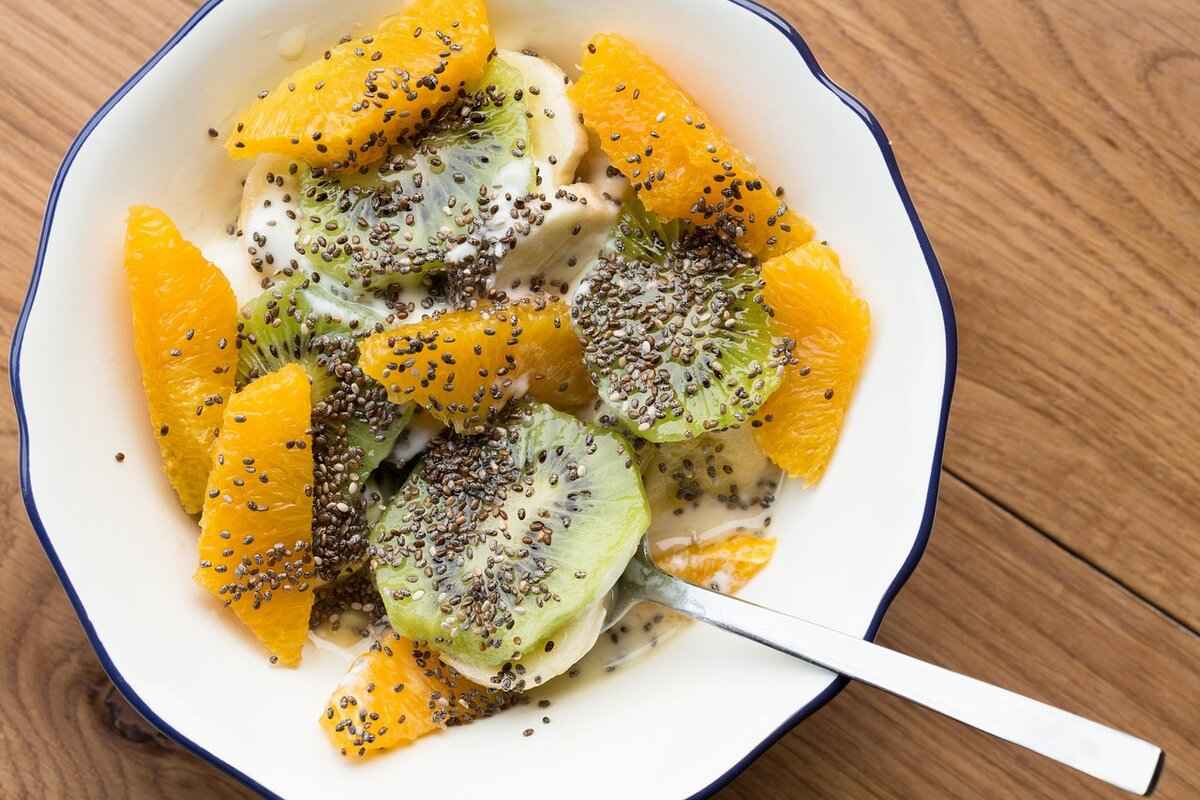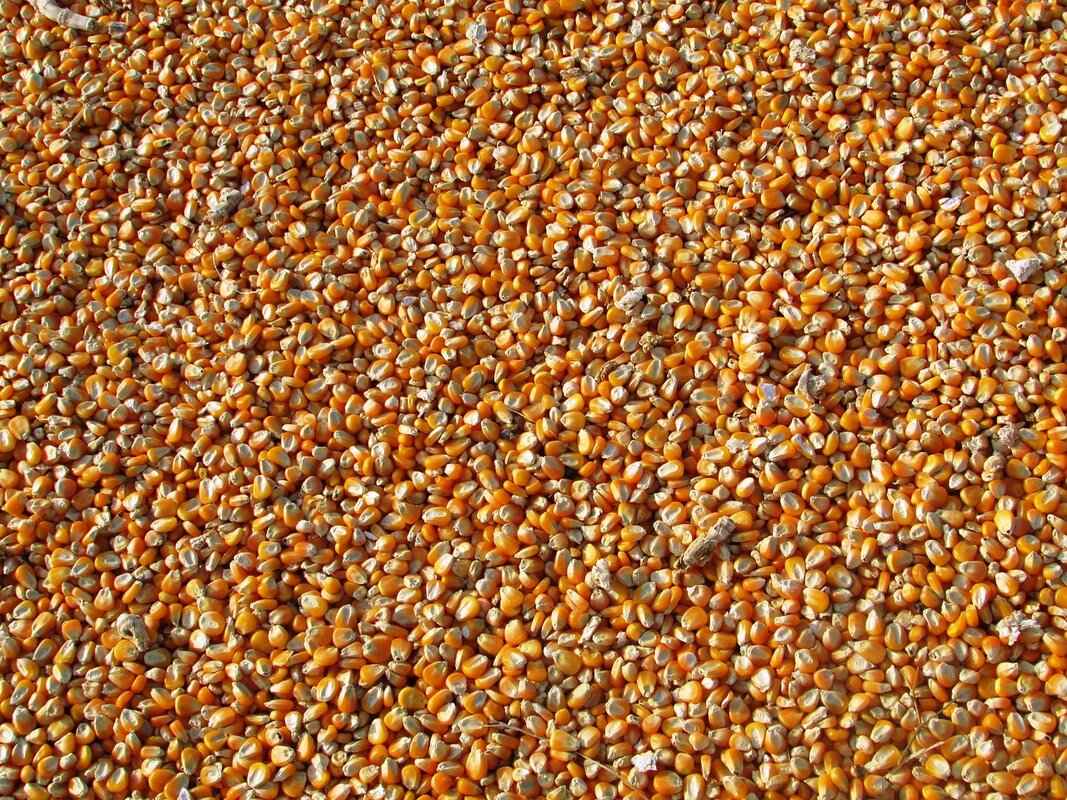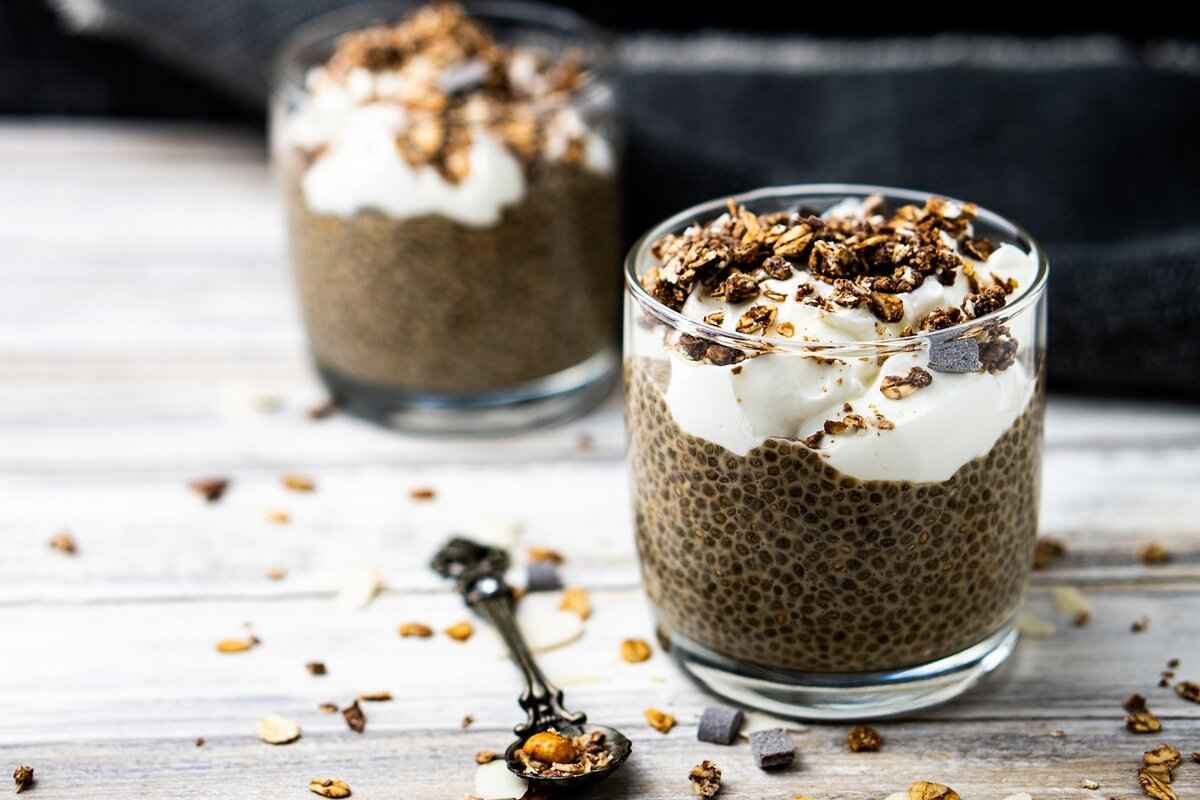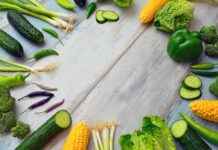Chia Seed Pudding with Almond Milk is not just a trendy dessert; it’s a nutritious and dairy-free option that can easily fit into your healthy eating plan. This article delves into the delightful combination of chia seeds and almond milk, exploring their benefits, preparation methods, and creative variations to enhance your culinary experience.
Chia seeds, derived from the Salvia hispanica plant, are tiny, yet packed with nutrients. These superfoods are rich in omega-3 fatty acids, fiber, protein, and antioxidants. Their ability to absorb liquid and form a gel-like consistency makes them an ideal ingredient for puddings and smoothies.
Almond milk is a fantastic dairy alternative, particularly for those who are lactose intolerant or have dairy allergies. It is low in calories, high in vitamin E, and provides a creamy texture that complements the chia seeds perfectly. Moreover, it is often fortified with additional nutrients, making it a great choice for a healthy lifestyle.
Incorporating chia seed pudding into your diet can yield numerous health benefits:
- Improved Digestion: The high fiber content aids in digestion and promotes gut health.
- Enhanced Heart Health: Omega-3 fatty acids contribute to cardiovascular wellness.
- Stable Blood Sugar Levels: Chia seeds help regulate blood sugar, making them a great snack for those managing diabetes.
Creating chia seed pudding is straightforward. Here’s a basic recipe:
Ingredients:- 1/4 cup chia seeds- 1 cup almond milk- 1-2 tablespoons sweetener (honey, maple syrup, or agave syrup)Instructions:1. In a bowl, mix the chia seeds and almond milk.2. Add sweetener and stir well.3. Let it sit for at least 4 hours or overnight in the refrigerator.
Enhancing your chia seed pudding is easy! Here are some popular flavoring options:
- Vanilla Extract: Adds a sweet aroma.
- Cocoa Powder: For a chocolatey twist.
- Fresh Fruits: Berries, bananas, or mangoes can elevate taste and nutrition.
For optimal consistency, chia seed pudding should be refrigerated for at least 4 hours, but overnight is recommended. This allows the chia seeds to fully absorb the liquid and expand, creating a creamy texture.
Transform your chia seed pudding into a gourmet treat with various toppings:
- Nuts and Seeds: Almonds, walnuts, or pumpkin seeds add crunch.
- Granola: For an added crunch and flavor.
- Fresh Berries: Strawberries, blueberries, or raspberries for a burst of freshness.
Absolutely! Chia seed pudding is an excellent meal prep option due to its long shelf life. You can prepare several servings at once and store them in the refrigerator for quick and healthy snacks throughout the week.
When making chia seed pudding, avoid these common pitfalls:
- Insufficient Soaking Time: Not allowing enough time for the seeds to absorb the liquid can result in a watery pudding.
- Using Too Much Liquid: This can lead to a runny texture. Stick to the recommended ratios for the best results.

What Are Chia Seeds?
Chia seeds are small, yet mighty, seeds that come from the Salvia hispanica plant, which is native to Central America. These tiny seeds have gained immense popularity in recent years due to their impressive nutrient profile and versatility in various dishes. They are often hailed as a superfood due to their high content of essential nutrients that contribute to overall health and well-being.
Chia seeds are packed with omega-3 fatty acids, which are crucial for heart health and brain function. In fact, they contain more omega-3s than salmon, making them a fantastic plant-based source for those who follow vegetarian or vegan diets. Additionally, these seeds are an excellent source of dietary fiber, with just one ounce providing around 11 grams. This high fiber content aids in digestion, helps regulate blood sugar levels, and promotes a feeling of fullness, making them ideal for weight management.
In addition to omega-3 fatty acids and fiber, chia seeds are rich in antioxidants, which help combat oxidative stress and inflammation in the body. They also provide essential minerals such as calcium, magnesium, and phosphorus, which play a vital role in bone health. Furthermore, chia seeds contain protein, making them a great addition to a balanced diet.
One of the unique properties of chia seeds is their ability to absorb liquid and form a gel-like consistency. When mixed with water or any liquid, they can swell up to 10-12 times their original size. This characteristic makes them perfect for creating chia seed pudding, where they can be combined with almond milk, coconut milk, or even fruit juices to create a delicious and nutritious dessert.
- Chia Seed Pudding: Mix chia seeds with almond milk and your choice of sweetener. Let it sit overnight for a creamy pudding.
- Smoothies: Add a tablespoon of chia seeds to your morning smoothie for an extra nutritional boost.
- Baking: Incorporate chia seeds into muffins, breads, or energy bars for added texture and nutrients.
- Salads: Sprinkle chia seeds on top of salads for a crunchy texture and nutritional enhancement.
While chia seeds are generally safe for most people, consuming them in excessive amounts can lead to digestive issues due to their high fiber content. It is advisable to start with a small amount and gradually increase intake to allow your digestive system to adjust. Additionally, it’s essential to drink plenty of water when consuming chia seeds to help with their hydration and digestion.
Chia seeds are widely available in health food stores, supermarkets, and online. When purchasing, look for high-quality, organic chia seeds to ensure you are getting the best nutrients. They can be found in various forms, including whole seeds, ground seeds, and even chia flour.
Overall, chia seeds are a nutrient-dense addition to any diet, providing numerous health benefits and culinary possibilities. Whether you are looking to enhance your breakfast, create a healthy snack, or add a boost to your meals, chia seeds are a versatile and nutritious choice.

Why Choose Almond Milk?
Almond milk has gained immense popularity as a dairy-free alternative, especially among those who are lactose intolerant or have dairy allergies. Its creamy texture and delightful flavor make it an appealing choice for various recipes, including smoothies, coffee, and desserts. But what exactly makes almond milk a preferred option for many? Let’s delve into the reasons why you might want to consider incorporating almond milk into your diet.
One of the standout features of almond milk is its low calorie content. Unlike traditional cow’s milk, which can be calorie-dense, almond milk is often significantly lower in calories, making it an excellent choice for those watching their weight. Additionally, almond milk is naturally high in vitamin E, an antioxidant that plays a crucial role in maintaining skin health and boosting the immune system.
For individuals with lactose intolerance or dairy allergies, almond milk serves as a safe and delicious alternative. It allows these individuals to enjoy creamy textures in their meals without experiencing discomfort. Moreover, almond milk is vegan-friendly, making it a great option for those following a plant-based diet.
When compared to other non-dairy milk options, such as soy or oat milk, almond milk stands out due to its unique flavor profile and nutritional composition. While soy milk is higher in protein, almond milk offers a lighter taste and is often fortified with vitamins and minerals. This makes it a versatile ingredient that can be used in various culinary applications.
When selecting almond milk, it’s essential to consider the ingredients list. Opt for brands that use minimal additives and avoid those with added sugars. Look for almond milk that is unsweetened to keep your sugar intake low and maximize health benefits. Additionally, choose fortified varieties to ensure you’re getting essential nutrients.
Absolutely! Almond milk can be used in a multitude of recipes, from savory to sweet. Its creamy texture makes it an ideal base for chia seed pudding, soups, sauces, and baked goods. When substituting almond milk for cow’s milk in recipes, a 1:1 ratio is typically suitable, allowing for seamless integration into your favorite dishes.
- Smoothies: Blend almond milk with your favorite fruits and vegetables for a refreshing drink.
- Coffee: Use almond milk as a creamer for a nutty twist to your morning brew.
- Puddings: Combine almond milk with chia seeds for a nutritious dessert.
- Oatmeal: Cook your oats in almond milk for added creaminess and flavor.
In summary, almond milk is a versatile and nutritious dairy alternative that suits a variety of dietary needs. Its health benefits, appealing taste, and adaptability in cooking make it a fantastic choice for anyone looking to explore dairy-free options. Whether you are lactose intolerant, vegan, or simply looking for a healthier alternative, almond milk can enhance your meals and contribute positively to your overall well-being.

Health Benefits of Chia Seed Pudding
Chia seed pudding has rapidly gained popularity as a nutritious and versatile dish. This delightful treat not only satisfies your taste buds but also offers a myriad of health benefits. In this section, we will explore the various advantages of incorporating chia seed pudding into your diet, focusing on its impact on digestion, heart health, and blood sugar stability.
Chia seeds are rich in dietary fiber, which plays a crucial role in maintaining a healthy digestive system. The soluble fiber in chia seeds absorbs water, forming a gel-like consistency that aids in regulating bowel movements. This can be particularly beneficial for individuals suffering from constipation or irregularity. Moreover, the fiber content helps promote a feeling of fullness, making chia seed pudding an excellent choice for those looking to manage their weight.
Chia seeds are an excellent source of omega-3 fatty acids, which are known for their heart-protective properties. These healthy fats help reduce inflammation, lower cholesterol levels, and decrease the risk of heart disease. Regular consumption of chia seed pudding can contribute to a healthier cardiovascular system. Additionally, the antioxidants found in chia seeds combat oxidative stress, further supporting overall heart health.
For individuals concerned about blood sugar regulation, chia seed pudding can be a fantastic addition to the diet. The high fiber content slows down the digestion of carbohydrates, leading to a more gradual release of glucose into the bloodstream. This can help prevent spikes in blood sugar levels, making it a suitable option for those with diabetes or insulin sensitivity. Including chia seed pudding as a snack or part of a meal can promote better blood sugar control.
The combination of fiber, healthy fats, and protein in chia seed pudding not only provides a satisfying meal but also keeps you feeling full for longer periods. This makes it an ideal snack or breakfast option for busy individuals. You can prepare it in advance, allowing for quick access to a nutritious meal on hectic mornings.
Making chia seed pudding is simple and requires minimal ingredients. To prepare, combine chia seeds with your choice of liquid, such as almond milk or coconut milk, and let it sit for several hours or overnight. This soaking process allows the seeds to absorb the liquid and expand, creating a creamy texture. You can also customize your pudding with sweeteners, fruits, or spices to enhance flavor.
While chia seeds are generally safe for most individuals, it’s important to consume them in moderation. Due to their high fiber content, excessive intake may lead to digestive discomfort. It’s advisable to gradually introduce chia seeds into your diet, especially if you’re not accustomed to high-fiber foods. Additionally, always ensure that you are adequately hydrated, as chia seeds absorb a significant amount of liquid.
In summary, chia seed pudding is not only a delicious treat but also a powerhouse of health benefits. From improving digestion and heart health to stabilizing blood sugar levels, this versatile dish can support various aspects of your well-being. By incorporating chia seed pudding into your diet, you can enjoy a nutritious and satisfying option that aligns with your health goals.

How to Make Chia Seed Pudding with Almond Milk
Creating chia seed pudding with almond milk is not only straightforward but also a rewarding culinary experience. This delightful treat requires just a few basic ingredients and minimal effort, making it an ideal choice for both novice cooks and seasoned chefs alike. Below, we will delve into the essential ingredients, ratios, and preparation steps that will guide you in crafting the perfect chia seed pudding.
To create a delicious chia seed pudding, you will need:
- Chia Seeds: 1/4 cup
- Almond Milk: 1 cup (unsweetened for a healthier option)
- Sweetener: 1-2 tablespoons (maple syrup, honey, or agave syrup)
- Vanilla Extract: 1 teaspoon (optional for flavor)
Follow these simple steps to prepare your chia seed pudding:
- Combine Ingredients: In a mixing bowl, add the chia seeds, almond milk, sweetener, and vanilla extract. Stir the mixture well to ensure the chia seeds are evenly distributed.
- Let It Rest: Allow the mixture to sit for about 5-10 minutes. This step is crucial as it enables the chia seeds to absorb the liquid and expand.
- Stir Again: After the resting period, stir the mixture again to break up any clumps of chia seeds that may have formed.
- Refrigerate: Transfer the mixture to a sealed container and refrigerate it for at least 4 hours, or preferably overnight. This resting time allows for the perfect pudding-like consistency.
To enhance your chia seed pudding experience, consider the following tips:
- Experiment with Ratios: If you prefer a thicker pudding, increase the chia seeds to 1/3 cup. For a thinner consistency, reduce the chia seeds.
- Add Flavorings: Spice up your pudding by incorporating cocoa powder, cinnamon, or fresh fruits like berries or bananas.
- Mix It Up: Try using different plant-based milks, such as coconut milk or oat milk, for varied flavors and textures.
Once your chia seed pudding has set, it’s time to serve! You can enjoy it plain or add toppings for an extra flavor boost. Consider using:
- Fresh Fruits: Strawberries, blueberries, or mango slices
- Nuts and Seeds: Almonds, walnuts, or pumpkin seeds
- Granola: For added crunch and sweetness
With these simple steps and tips, you can create a delicious and nutritious chia seed pudding with almond milk that is sure to satisfy your cravings. Enjoy experimenting with flavors and toppings to make it your own!
Basic Recipe for Chia Seed Pudding
Chia seed pudding has gained immense popularity as a nutritious and versatile snack. This delightful dish is not only easy to prepare but also packed with health benefits. Below, we will explore a simple recipe for making chia seed pudding with almond milk, along with tips to enhance its flavor and nutritional value.
- Chia Seeds: The star ingredient, known for their high fiber and omega-3 content.
- Almond Milk: A creamy, dairy-free alternative that adds a delightful flavor.
- Sweeteners: Options like honey, maple syrup, or agave to taste.
- Flavorings: Vanilla extract, cocoa powder, or fruit can be added for extra taste.
To create a delicious chia seed pudding, follow these simple steps:
- Combine Ingredients: In a medium-sized bowl, mix 1/4 cup of chia seeds with 1 cup of almond milk. Add your preferred sweetener, such as 2 tablespoons of honey.
- Stir Well: Use a whisk or spoon to ensure that the chia seeds are evenly distributed and not clumping together.
- Let It Sit: Allow the mixture to sit for about 10 minutes, then stir again to break up any clumps. Cover the bowl and place it in the refrigerator.
- Refrigerate: For the best texture and flavor, let the pudding chill for at least 4 hours or overnight. This allows the chia seeds to absorb the almond milk and expand, creating a thick, creamy consistency.
While the basic recipe is delicious on its own, you can easily customize your chia seed pudding:
- Add Fruits: Fresh fruits like berries, bananas, or mangoes can add natural sweetness and vibrant colors.
- Incorporate Nuts and Seeds: Toppings like almonds, walnuts, or pumpkin seeds provide a satisfying crunch.
- Use Spices: Cinnamon or nutmeg can add warmth and depth to the flavor.
Chia seed pudding is not just a tasty treat; it offers numerous health benefits:
- High in Fiber: Promotes digestive health and helps maintain a feeling of fullness.
- Rich in Antioxidants: Helps combat oxidative stress in the body.
- Supports Heart Health: The omega-3 fatty acids in chia seeds contribute to cardiovascular health.
Absolutely! Chia seed pudding is perfect for meal prepping. You can make several servings in advance and store them in individual jars. This not only saves time but also ensures you have a healthy snack or breakfast option readily available throughout the week.
To achieve the perfect chia seed pudding, be mindful of these common mistakes:
- Not Mixing Well: Ensure you stir the mixture thoroughly to prevent clumping.
- Using Too Much Liquid: Stick to the recommended ratio of chia seeds to liquid for the best texture.
- Insufficient Soaking Time: Allow enough time for the seeds to absorb the liquid and expand.
With this guide, you’re well on your way to creating a delicious and nutritious chia seed pudding that you can enjoy any time of the day!
Flavoring Your Pudding
Enhancing your chia seed pudding is not only simple but also an opportunity to explore a wide range of flavors that can elevate your dish. With the right additions, you can transform a basic pudding into a delightful and nutritious treat that satisfies your taste buds and dietary needs.
1. Vanilla Extract: A Classic Choice
One of the easiest ways to add flavor to your chia seed pudding is by incorporating vanilla extract. Just a teaspoon can infuse your pudding with a warm, sweet aroma that complements the natural nuttiness of almond milk. Vanilla is not only delicious but also has antioxidant properties, making it a healthful addition.
2. Cocoa Powder: For Chocolate Lovers
If you’re a fan of chocolate, consider mixing in some cocoa powder to your pudding. This rich flavor not only satisfies chocolate cravings but also adds iron and magnesium to your meal. For an extra indulgent treat, you can top your cocoa-flavored pudding with dark chocolate shavings or cacao nibs.
3. Fresh Fruits: Nature’s Sweetness
Adding fresh fruits like berries, bananas, or mango can significantly enhance the taste and nutritional profile of your chia seed pudding. Fruits provide natural sweetness along with essential vitamins and minerals. For instance, berries are rich in antioxidants, while bananas add potassium and creaminess.
4. Nut Butters: Creamy and Rich
Incorporating nut butters such as almond or peanut butter can add a creamy texture and a dose of healthy fats to your pudding. Just a tablespoon stirred in can make your pudding more filling and flavorful, while also providing protein that helps keep you satiated.
5. Spices: A Flavorful Twist
Don’t overlook the power of spices! Adding a pinch of cinnamon or nutmeg can create a warm, comforting flavor profile. These spices not only enhance taste but also offer health benefits, such as anti-inflammatory properties.
6. Sweeteners: Adjusting to Your Taste
While chia seed pudding can be naturally sweetened with fruits, you may also want to adjust the sweetness with natural sweeteners like honey, maple syrup, or agave nectar. These options can be tailored to your personal preference, allowing you to create a dessert that suits your taste.
7. Coconut: A Tropical Flair
For a tropical twist, consider adding coconut milk or shredded coconut to your pudding. This addition not only enhances the flavor but also provides healthy fats and a unique texture. You can even sprinkle toasted coconut on top for added crunch.
8. Matcha: A Superfood Boost
For those looking to incorporate superfoods, matcha powder is an excellent choice. This finely ground green tea powder adds a vibrant color and a subtle earthy flavor, along with a boost of antioxidants. A teaspoon mixed into your pudding can elevate its health benefits.
By experimenting with these various flavoring options, you can create a chia seed pudding that is not only delicious but also tailored to your preferences and nutritional needs. The versatility of chia seeds allows for endless possibilities, making this dish a favorite among health enthusiasts. So, get creative and enjoy the delightful journey of enhancing your chia seed pudding!

How Long to Refrigerate Chia Seed Pudding?
When it comes to preparing chia seed pudding, one of the most critical steps is understanding the importance of refrigeration time. This process is essential for achieving the desired pudding consistency and flavor. Typically, chia seed pudding should be refrigerated for at least 4 hours, but for optimal results, allowing it to sit overnight is highly recommended.
The refrigeration period allows the chia seeds to absorb the liquid, expanding and forming a gel-like consistency that is characteristic of pudding. Without adequate refrigeration, the seeds may not fully hydrate, resulting in a watery texture and less appealing flavor. This process is what transforms a simple mixture of chia seeds and almond milk into a creamy, delightful treat.
- Hydration: Chia seeds can absorb up to 12 times their weight in liquid. During refrigeration, they swell as they soak up the almond milk, creating a pudding-like texture.
- Flavor Development: Allowing the pudding to sit for an extended period enhances the flavors. Ingredients like vanilla extract or cocoa powder blend more thoroughly, resulting in a richer taste.
- Texture Improvement: The longer the pudding sits, the creamier and more cohesive it becomes, making it more enjoyable to eat.
While it’s possible to refrigerate chia seed pudding for a shorter time, the results may not be as satisfying. If you’re in a hurry, aim for at least 2 hours to allow some hydration, but be prepared for a less creamy texture. For the best experience, plan ahead and let it sit overnight.
Proper storage is also vital for maintaining the quality of your chia seed pudding. Here are some tips:
- Use Airtight Containers: Store your pudding in airtight containers to prevent it from absorbing odors from the fridge and to maintain freshness.
- Keep it Chilled: Always refrigerate your pudding immediately after preparation. This helps to inhibit bacterial growth and keeps it safe to eat.
- Consume Within a Week: For the best taste and texture, consume your chia seed pudding within 5 to 7 days of making it.
If you accidentally leave your chia seed pudding out at room temperature for more than 2 hours, it’s best to err on the side of caution and discard it. Food safety is paramount, and it’s not worth risking your health for a forgotten treat.
In summary, the refrigeration time for chia seed pudding is crucial for achieving the perfect consistency and flavor. By allowing your pudding to sit for at least 4 hours or overnight, you can enjoy a delicious, creamy dessert that is both nutritious and satisfying. So next time you whip up a batch, remember to plan ahead and give it the time it needs to shine!

Creative Toppings for Chia Seed Pudding
Chia seed pudding is not just a nutritious snack; it can also be a canvas for your culinary creativity. With the right toppings, you can elevate this simple dish into a gourmet treat that satisfies both your taste buds and your health goals. In this section, we will delve into various creative toppings that can transform your chia seed pudding into a delightful experience.
Toppings play a crucial role in enhancing the overall flavor and texture of your chia seed pudding. They can add crunch, sweetness, and visual appeal, making your dish not only more enjoyable but also more nutritious. By incorporating a variety of toppings, you can tailor your pudding to your personal preferences and dietary needs.
One of the best ways to introduce crunch to your chia seed pudding is by adding nuts. Here are some popular options:
- Almonds: Sliced or chopped almonds offer a delightful crunch and a boost of healthy fats.
- Walnuts: These provide a rich flavor and are packed with omega-3 fatty acids.
- Pecans: Their sweet, buttery taste complements the pudding perfectly.
Consider toasting the nuts lightly to enhance their flavor before sprinkling them over your pudding.
In addition to chia seeds, you can add other seeds to enrich your pudding:
- Flaxseeds: High in fiber and omega-3s, they can boost the nutritional value of your dish.
- Sunflower Seeds: Their nutty flavor and crunch make them an excellent topping choice.
- Pumpkin Seeds: Rich in magnesium, these seeds add a unique taste and texture.
Fresh fruits not only add sweetness but also vibrant colors to your chia seed pudding. Here are some delicious fruit toppings to consider:
- Berries: Strawberries, blueberries, and raspberries are rich in antioxidants and add a burst of flavor.
- Bananas: Sliced bananas provide natural sweetness and creaminess.
- Mango: Diced mango adds a tropical twist and is a great source of vitamins.
Granola is another fantastic topping that can enhance both the texture and flavor of your chia seed pudding. Look for varieties that are low in sugar and high in whole grains. You can also make your own granola at home to control the ingredients:
Ingredients:- 2 cups rolled oats- 1/2 cup nuts (your choice)- 1/4 cup honey or maple syrup- 1/4 cup coconut oil- 1 tsp vanilla extract- A pinch of saltInstructions:1. Preheat the oven to 350°F (175°C).2. Mix all ingredients in a bowl.3. Spread the mixture on a baking sheet and bake for 20-25 minutes, stirring occasionally.
Finally, consider adding natural sweeteners and flavor enhancers to your pudding:
- Honey or Maple Syrup: A drizzle can add just the right amount of sweetness.
- Cinnamon: This spice can enhance the flavor profile and add warmth.
- Vanilla Extract: A splash of vanilla can elevate the overall taste of your pudding.
By experimenting with these toppings, you can create a unique chia seed pudding every time, making it a versatile dish that never gets boring. Enjoy the process of creating your own delicious combinations!

Can You Meal Prep Chia Seed Pudding?
Chia seed pudding has gained popularity as a nutritious and versatile snack option, making it a favorite among meal preppers. One of the most appealing aspects of chia seed pudding is its long shelf life, which allows you to prepare multiple servings in advance without worrying about spoilage. This article delves into the benefits of meal prepping chia seed pudding, providing insights on how to effectively incorporate it into your routine.
Meal prepping chia seed pudding can significantly streamline your week. By preparing several servings at once, you can save time and ensure that you have a healthy snack or breakfast option readily available. This is particularly beneficial for busy individuals or families who may struggle to find time for nutritious meals during hectic days.
One of the standout features of chia seed pudding is its ability to remain fresh in the refrigerator for up to 5-7 days. This makes it an excellent option for meal prep, as you can prepare a batch on the weekend and enjoy it throughout the week. Just be sure to store it in airtight containers to maintain its quality.
To make the most of your meal prep experience, follow these simple steps:
- Choose Your Base: Start with almond milk, coconut milk, or any non-dairy milk of your choice.
- Measure Ingredients: A common ratio is 1/4 cup of chia seeds to 1 cup of liquid. Adjust according to your desired consistency.
- Add Sweeteners: Incorporate natural sweeteners like honey, maple syrup, or agave to enhance flavor.
- Mix Well: Stir the mixture thoroughly to prevent clumping.
- Let It Sit: Allow the pudding to sit for at least 4 hours or overnight in the refrigerator.
To keep your chia seed pudding exciting, consider experimenting with various flavors and toppings:
- Fruit Additions: Incorporate fresh or frozen fruits such as berries, bananas, or mangoes.
- Nut Butters: Swirl in almond butter or peanut butter for added creaminess and protein.
- Spices: Sprinkle in cinnamon or nutmeg for a warm flavor profile.
- Chocolate Lovers: Add cocoa powder or chocolate chips for a decadent treat.
While meal prepping chia seed pudding is straightforward, there are some common pitfalls to avoid:
- Insufficient Soaking Time: Not allowing the pudding to soak long enough can result in a watery texture.
- Too Much Liquid: Using excessive liquid can lead to a runny consistency. Stick to the recommended ratios.
- Neglecting Flavor: Don’t forget to add flavorings and toppings to enhance the overall taste.
Chia seed pudding is not only a nutritious option but also a practical meal prep solution. Its long shelf life and versatility make it an ideal choice for those looking to maintain a healthy diet without sacrificing convenience. By planning ahead and experimenting with flavors, you can enjoy this delightful pudding throughout the week, making healthy eating both easy and enjoyable.

Common Mistakes to Avoid
When it comes to creating the perfect chia seed pudding, achieving the right texture and flavor can be a delicate balance. Unfortunately, many people encounter common pitfalls that can lead to a less-than-ideal result. This section will explore these mistakes in detail, highlighting how to avoid them for an enjoyable and nutritious treat.
One of the most critical aspects of making chia seed pudding is the soaking time. Insufficient soaking can result in a gritty texture, which detracts from the overall experience. Chia seeds need time to absorb the liquid and expand, forming a gel-like consistency. To achieve the best results, it is recommended to soak chia seeds for at least 4 hours or overnight. This allows the seeds to fully hydrate and develop that creamy pudding texture.
Another common mistake is using too much liquid. While chia seeds can absorb a significant amount of liquid, exceeding the recommended ratio can lead to a watery pudding. A general guideline is to use 3 tablespoons of chia seeds for every 1 cup of almond milk. Adjusting this ratio will help you achieve the desired consistency—too little liquid results in a dry pudding, while too much leads to a soupy mess.
Using stale or expired ingredients can also impact the flavor of your chia seed pudding. Always ensure that your chia seeds and any flavorings, such as vanilla extract or sweeteners, are fresh. Quality matters—fresh ingredients not only enhance the taste but also improve the nutritional value of your dish.
After combining the chia seeds with almond milk, it’s essential to stir the mixture thoroughly. Neglecting this step can lead to clumps of seeds that do not hydrate uniformly. For best results, stir the mixture well and then let it sit for a few minutes before giving it another stir. This process helps distribute the seeds evenly throughout the liquid.
While enhancing your chia seed pudding with flavors is encouraged, adding too many ingredients at once can overwhelm the pudding. Start with a few basic flavorings, such as vanilla extract or honey, and gradually introduce other ingredients. This approach allows you to find the right balance without compromising the pudding’s integrity.
Lastly, improper storage can lead to spoilage. Chia seed pudding should be stored in an airtight container in the refrigerator. It can last for up to 5 days, but be sure to check for any signs of spoilage before consuming. Always label your containers with the date to keep track of freshness.
By avoiding these common mistakes, you can create a delicious and nutritious chia seed pudding that is both satisfying and beneficial for your health. With the right techniques and attention to detail, your pudding will be a delightful addition to your meals.
Frequently Asked Questions
- How long does chia seed pudding last in the fridge?
Chia seed pudding can typically last for about 5 days in the fridge. Just make sure to store it in an airtight container to keep it fresh and tasty!
- Can I use other types of milk for chia seed pudding?
Absolutely! While almond milk is a great choice, you can also use coconut milk, soy milk, or oat milk. Each type will give your pudding a unique flavor and texture!
- Is chia seed pudding suitable for kids?
Yes! Chia seed pudding is a healthy and fun option for kids. You can get creative with toppings like fruits and nuts, making it a nutritious treat they’ll love.
- What happens if I don’t let the pudding sit long enough?
If you don’t let your chia seed pudding sit long enough, it may end up too runny and won’t achieve that delightful pudding-like consistency. Aim for at least 4 hours, or better yet, overnight!
- Can I add protein powder to my chia seed pudding?
Definitely! Adding protein powder is a fantastic way to boost the nutritional value of your pudding. Just mix it in with the chia seeds and almond milk before letting it sit.














